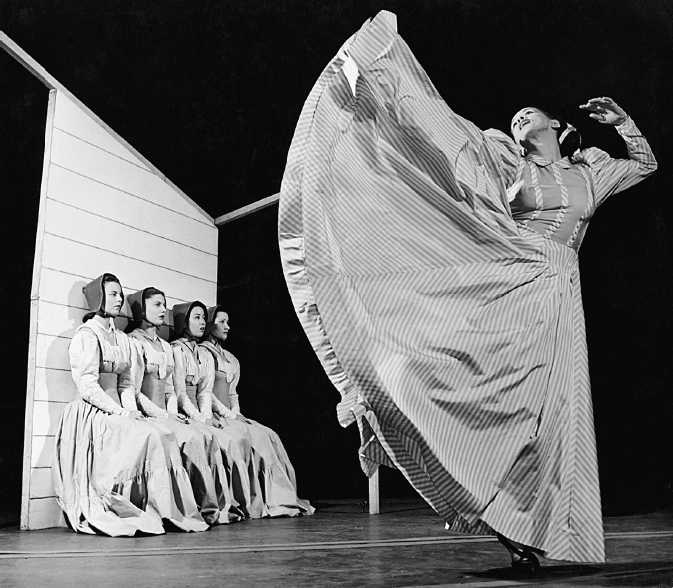Aaron Copland, Appalachian Spring (1945)
The ballet Appalachian Spring was choreographed and danced by Martha Graham, a towering figure in American modern dance. She conceived of “a pioneer celebration in spring around a newly built farmhouse in the Pennsylvania hills,” set in the early nineteenth century. Copland composed the ballet music, and later arranged from it a concert suite in six continuous sections. Our recording is conducted by the composer.
Section 1 The ballet begins with a very still, clear, static passage of a kind that Copland made very much his own. It seems to catch the spirit of a vast silent landscape at dawn, perhaps, or just before dawn. Solo instruments play meditative figures in counterpoint; an occasional solemn pulse is heard in the harp.
Section 2 Here “the bride-

After a section of irregular rhythm, reminiscent of Stravinsky, the music dies down into a prayerful version of the hymn. We also hear little fragments of the dance.
Sections 3 and 4 The next two sections pick up the tempo: Section 3 evokes another whirling square dance, and section 4 is a danced sermon by a revivalist and his followers. Both sections include quiet statements of the hymn.
Section 5 The next dance is choreographed to a set of variations on a Shaker song, “Simple Gifts.” (The beginning words of the song are given in the margin below.) The Shakers, a religious sect adhering to celibacy and common ownership of property, founded scattered communities from Massachusetts to Kentucky in the late eighteenth century.

The four variations are extremely simple — little more, really, than playings of the tune or part of the tune by different instruments, in different keys, and in different tempos. Sometimes melodic phrases are heard in imitation.
LISTEN
Appalachian Spring
’Tis the gift to be simple, ’tis the gift to be free,
’Tis the gift to come down where you ought to be,
And when we find ourselves in the place just right
’Twill be in the valley of love and delight. . . .
When true simplicity is gained
To bow and to bend we shan’t be ashamed,
Turn, turn will be our delight,
Till by turning, turning we come round right.
“Simple Gifts”
| SECTION 5 | |
| 0:00 | Theme |
| 0:33 | Variation 1 |
| 1:02 | Variation 2 |
| 1:51 | Variation 3 |
| 2:34 | Variation 4 |
Section 6 Finally, after some music that the program says is “like a prayer,” the hymn and the landscape music return once again. We realize that Copland has ingeniously made one grow out of the other. The ballet concludes very quietly. Perhaps the housewarming celebrations have gone on all night, and we are now experiencing another clear gray dawn, a reminder of the many lonely dawns the pioneer couple will face together in the years to come.
